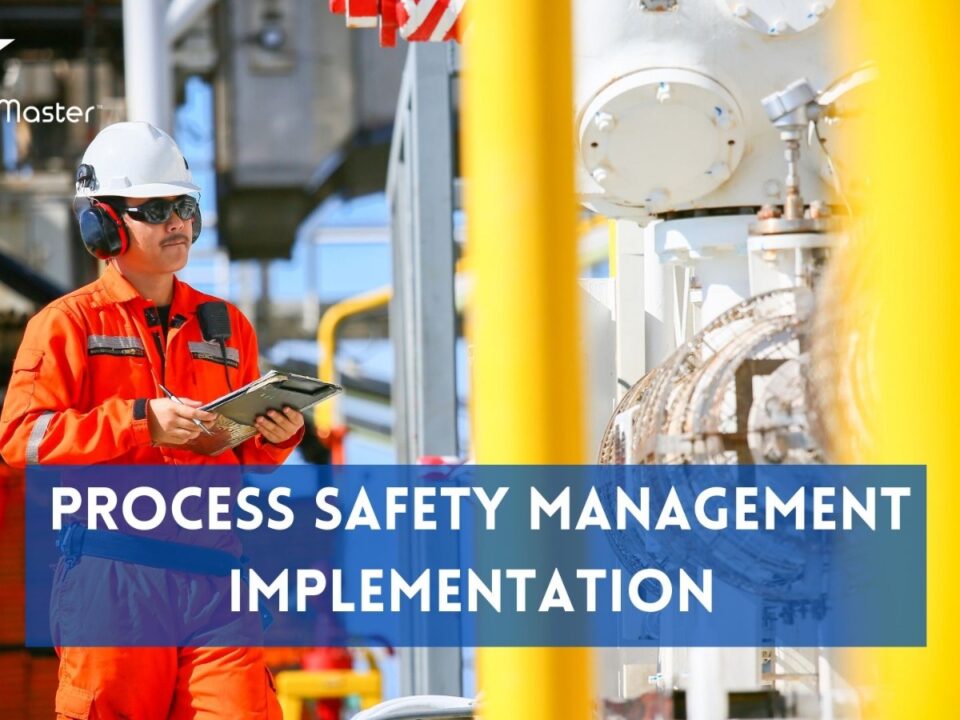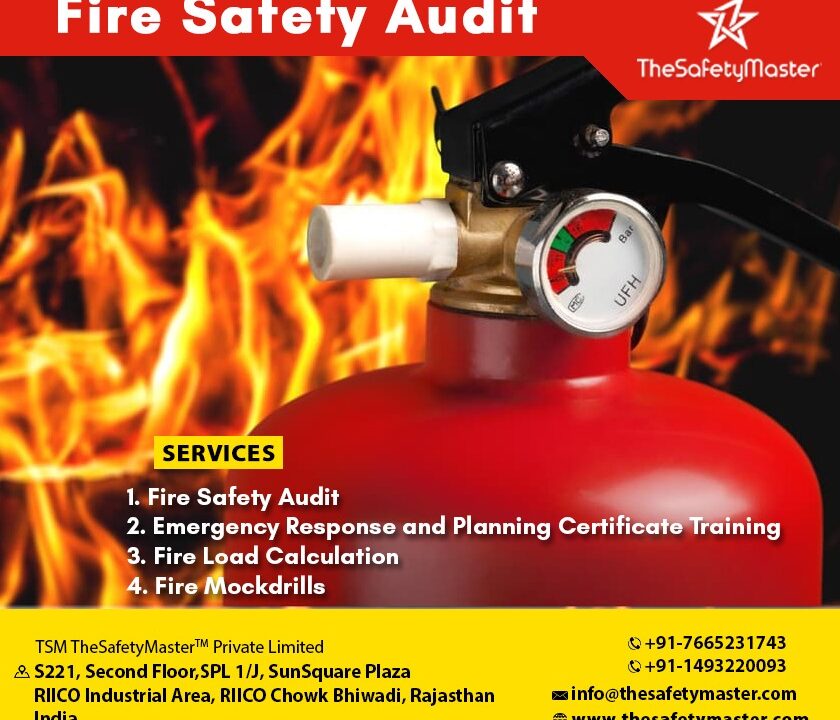A Comprehensive Overview of Operational Risk Management in the Chemical Industry

Emergency Response Plan: Protecting Your Business and Community
May 8, 2023
Best safety consultant in India
May 9, 2023A Comprehensive Overview of Operational Risk Management in the Chemical Industry
In this article, we delve into the world of operational risk management (ORM) in the chemical industry. With intricate processes and unforgiving demands, safety must be of utmost importance. We highlight the challenges faced by the industry and discuss various ORM frameworks that can help mitigate risks. Our comprehensive overview takes a deep dive into the different types of ORM techniques and how they can be applied effectively. By the end of this piece, readers can expect to have a better understanding of the importance of ORM in the chemical industry and how it can help safeguard against potential catastrophes.
Understanding Operational Risk Management
Operational risk management in the chemical industry refers to the process of identifying, assessing, and managing various risks that arise due to an organization’s operations. This process involves evaluating different aspects of an organization’s operations, including its people, processes, and technology. Operational risk management helps organizations identify and manage potential operational risks before they become major issues.Effective operational risk management involves a comprehensive understanding of how an organization operates. The process includes identifying potential hazards in all aspects of an organization’s operations and developing strategies to mitigate those risks. Understanding the importance of operational risk management in the chemical industry is crucial for ensuring safety and minimizing financial losses due to accidents or other unforeseen events. With thorough understanding and effective implementation of operational risk management strategies, companies can avoid costly mistakes while maintaining safe and efficient operations.
Introduction
Operational risk management is a critical aspect of the chemical industry, and an essential factor for companies in this sector to be successful. Chemical companies are exposed to various operational risks daily that can lead to significant consequences if not appropriately managed. Risks such as accidents, equipment failures, regulatory compliance issues, and environmental concerns can all have severe impacts on the company’s reputation and financial performance. In this article, we will provide a comprehensive overview of operational risk management in the chemical industry. We will cover key elements of operational risk management and identify different categories of operational risks prevalent in the sector. Additionally, we will discuss effective strategies for identifying and assessing operational risks while proposing mitigation plans to manage them effectively. We will also examine best practices for implementing an operational risk management plan while measuring its effectiveness and addressing some common challenges faced by companies in the implementation process
Key Elements of Operational Risk Management in the Chemical Industry
Operational risk management is a critical component of chemical industry safety. There are several key elements that make up effective operational risk management, including understanding the risks associated with various chemical processes and implementing appropriate controls to mitigate those risks. One key element of operational risk management in the chemical industry is developing a comprehensive risk assessment process. This involves identifying the potential hazards associated with chemical processes, assessing the likelihood and severity of those hazards, and implementing controls to reduce or eliminate them. It can be a complex and time-consuming process, but it is essential for ensuring the safety of workers and the surrounding community.
Another important element of operational risk management in the chemical industry is having robust emergency response plans in place. These plans should outline what steps should be taken in the event of an incident or accident, including evacuation procedures, communication protocols, and plans for addressing environmental impacts. By preparing thoroughly for emergencies, companies can minimize their impact on people and the environment while also protecting their own operations from significant disruptions.
What are the Different Categories of Operational Risk in the Chemical Industry?
Operational risk in the chemical industry is a major concern for organizations as it can have far-reaching consequences. The different categories of operational risks in the chemical industry include technological, financial, and human factors. Technological risks refer to equipment failure or malfunction and can lead to safety incidents, environmental damage, and production delays. Financial risks include market fluctuations, currency exchange rates, credit risk, and counterparty risk.Human factors are a significant source of operational risk in the chemical industry. These risks include employee errors, misconduct or fraud, inadequate training or supervision, and labor disputes. Human error is a leading cause of accidents in the industry that often result in fatalities or serious injuries. Therefore companies must take steps to mitigate these risks by providing adequate training to employees on safety procedures and encouraging compliance with regulatory guidelines.
Regulatory compliance is critical for minimizing operational risks as government agencies impose strict regulations on the chemical industry’s operations due to their hazardous nature. Companies must ensure they comply with these regulations such as those related to emissions control, waste management practices and occupational health & safety requirements. By doing so not only do they minimize their exposure to legal liability but also protect their employees from potential harm while enhancing public trust and reputation by demonstrating responsible stewardship towards their environmental obligations
The Role of Regulatory Compliance in Operational Risk Management
The Role of Regulatory Compliance in Operational Risk ManagementCompliance with regulatory requirements is an essential aspect of operational risk management in the chemical industry. Organizations must adhere to a range of local, national, and international regulations that govern various aspects of chemical production, storage, transport, and disposal. These regulations aim to ensure safety and mitigate operational risks associated with the handling of hazardous chemicals.
Effective regulatory compliance programs require a systematic approach that includes identifying and interpreting relevant laws and regulations, implementing appropriate policies and procedures, training personnel on compliance requirements, monitoring compliance performance regularly, and enforcing penalties for non-compliance. The chemical industry must establish effective communication channels with regulatory bodies to keep abreast of new developments in regulations.
Proactive compliance management demonstrates an organization’s commitment to responsible corporate citizenship by ensuring adherence to ethical standards and reducing potential legal liabilities. Regulatory compliance should not just be viewed as a box-ticking exercise but rather integrated into the broader risk management framework for the continual improvement of process safety culture within organizations. By doing so, organizations can enhance their reputations as responsible players in the industry while minimizing operational risks associated with non-compliance such as legal fines or shutdowns.
A Comprehensive Overview of Operational Risk Management in the Chemical Industry
In this article, we delve into the world of operational risk management (ORM) in the chemical industry. With intricate processes and unforgiving demands, safety must be of utmost importance. We highlight the challenges faced by the industry and discuss various ORM frameworks that can help mitigate risks. Our comprehensive overview takes a deep dive into the different types of ORM techniques and how they can be applied effectively. By the end of this piece, readers can expect to have a better understanding of the importance of ORM in the chemical industry and how it can help safeguard against potential catastrophes.
Understanding Operational Risk Management
Operational risk management in the chemical industry refers to the process of identifying, assessing, and managing various risks that arise due to an organization’s operations. This process involves evaluating different aspects of an organization’s operations, including its people, processes, and technology. Operational risk management helps organizations identify and manage potential operational risks before they become major issues.Effective operational risk management involves a comprehensive understanding of how an organization operates. The process includes identifying potential hazards in all aspects of an organization’s operations and developing strategies to mitigate those risks. Understanding the importance of operational risk management in the chemical industry is crucial for ensuring safety and minimizing financial losses due to accidents or other unforeseen events. With thorough understanding and effective implementation of operational risk management strategies, companies can avoid costly mistakes while maintaining safe and efficient operations.
Introduction
<p>Operational risk management is a critical aspect of the chemical industry, and an essential factor for companies in this sector to be successful. Chemical companies are exposed to various operational risks daily that can lead to significant consequences if not appropriately managed. Risks such as accidents, equipment failures, regulatory compliance issues, and environmental concerns can all have severe impacts on the company’s reputation and financial performance.</p><p>In this article, we will provide a comprehensive overview of operational risk management in the chemical industry. We will cover key elements of operational risk management and identify different categories of operational risks prevalent in the sector. Additionally, we will discuss effective strategies for identifying and assessing operational risks while proposing mitigation plans to manage them effectively. We will also examine best practices for implementing an operational risk management plan while measuring its effectiveness and addressing some common challenges faced by companies in the implementation process
Key Elements of Operational Risk Management in the Chemical Industry
Operational risk management is a critical component of chemical industry safety. There are several key elements that make up effective operational risk management, including understanding the risks associated with various chemical processes and implementing appropriate controls to mitigate those risks. One key element of operational risk management in the chemical industry is developing a comprehensive risk assessment process. This involves identifying the potential hazards associated with chemical processes, assessing the likelihood and severity of those hazards, and implementing controls to reduce or eliminate them. It can be a complex and time-consuming process, but it is essential for ensuring the safety of workers and the surrounding community.
Another important element of operational risk management in the chemical industry is having robust emergency response plans in place. These plans should outline what steps should be taken in the event of an incident or accident, including evacuation procedures, communication protocols, and plans for addressing environmental impacts. By preparing thoroughly for emergencies, companies can minimize their impact on people and the environment while also protecting their own operations from significant disruptions.
What are the Different Categories of Operational Risk in the Chemical Industry?
Operational risk in the chemical industry is a major concern for organizations as it can have far-reaching consequences. The different categories of operational risks in the chemical industry include technological, financial, and human factors. Technological risks refer to equipment failure or malfunction and can lead to safety incidents, environmental damage, and production delays. Financial risks include market fluctuations, currency exchange rates, credit risk, and counterparty risk.Human factors are a significant source of operational risk in the chemical industry. These risks include employee errors, misconduct or fraud, inadequate training or supervision, and labor disputes. Human error is a leading cause of accidents in the industry that often result in fatalities or serious injuries. Therefore companies must take steps to mitigate these risks by providing adequate training to employees on safety procedures and encouraging compliance with regulatory guidelines.
Regulatory compliance is critical for minimizing operational risks as government agencies impose strict regulations on the chemical industry’s operations due to their hazardous nature. Companies must ensure they comply with these regulations such as those related to emissions control, waste management practices and occupational health & safety requirements. By doing so not only do they minimize their exposure to legal liability but also protect their employees from potential harm while enhancing public trust and reputation by demonstrating responsible stewardship towards their environmental obligations
The Role of Regulatory Compliance in Operational Risk Management
The Role of Regulatory Compliance in Operational Risk ManagementCompliance with regulatory requirements is an essential aspect of operational risk management in the chemical industry. Organizations must adhere to a range of local, national, and international regulations that govern various aspects of chemical production, storage, transport, and disposal. These regulations aim to ensure safety and mitigate operational risks associated with the handling of hazardous chemicals.
Effective regulatory compliance programs require a systematic approach that includes identifying and interpreting relevant laws and regulations, implementing appropriate policies and procedures, training personnel on compliance requirements, monitoring compliance performance regularly, and enforcing penalties for non-compliance. The chemical industry must establish effective communication channels with regulatory bodies to keep abreast of new developments in regulations.
Proactive compliance management demonstrates an organization’s commitment to responsible corporate citizenship by ensuring adherence to ethical standards and reducing potential legal liabilities. Regulatory compliance should not just be viewed as a box-ticking exercise but rather integrated into the broader risk management framework for the continual improvement of process safety culture within organizations. By doing so, organizations can enhance their reputations as responsible players in the industry while minimizing operational risks associated with non-compliance such as legal fines or shutdowns.
Effective Strategies to Identify and Assess Operational Risks
Effective Strategies to Identify and Assess Operational Risks:One of the key components of operational risk management in the chemical industry is the identification and assessment of operational risks. Identifying potential risks can help organizations take proactive measures to prevent them from occurring, while assessing risks can ensure that appropriate measures are in place to mitigate their impact.
To effectively identify operational risks, companies need to have a clear understanding of their business processes and operations. This involves conducting a detailed analysis of processes, systems, people, and external factors that could impact operations. The use of risk assessments tools such as checklists or flow diagrams is also an effective strategy for identifying operational risks.
Once identified, it is important to assess these risks by evaluating their likelihood and potential impact on the organization. This involves assigning a numerical value to each risk based on its probability and severity. By prioritizing risks based on their level of potential harm, organizations can focus resources on preventing or mitigating those with the highest risk levels. Overall, effective strategies for identifying and assessing operational risks can enable companies in the chemical industry to proactively manage potential challenges before they become major issues.
Developing Mitigation Plans to Manage Operational Risk
Developing Mitigation Plans to Manage Operational RiskOnce operational risks have been identified and assessed, it is crucial to develop mitigation plans to manage them effectively. The mitigation plan should include a detailed outline of the risk management strategies, resources required, and timelines for implementation. The goal of the plan is to minimize the negative impact of potential operational risks on business operations.
There are several steps involved in developing an effective mitigation plan. Firstly, it is essential to prioritize operational risks based on their level of severity and likelihood of occurrence. This prioritization will help in allocating resources and efforts towards mitigating high-risk hazards first.
Secondly, after identifying high-risk operational hazards, it is necessary to determine all possible risk control measures that can be implemented. These control measures may include process changes, training programs for employees, or equipment upgrades.
Lastly, a contingency plan should be developed as part of the mitigation strategy which outlines how operations will continue if a significant risk event occurs. By planning ahead for potential operational disruptions or failures, businesses can reduce downtime and maintain continuity in their operations while managing associated risks effectively.
Operational Risk Management Best Practices for the Chemical Industry
Operational Risk Management Best Practices for the Chemical Industry:
In the chemical industry, operational risk management is crucial to ensure safety and protect business continuity. To achieve operational excellence, organizations must follow best practices such as conducting regular risk assessments, implementing effective mitigation strategies, and continuously monitoring operational risks. One key best practice is to establish a robust incident reporting and investigation process. This allows organizations to quickly identify any potential hazards or near-misses before they turn into major incidents that can result in significant damage or loss of life. Additionally, it enables organizations to learn from past experiences and develop preventive measures for future incidents.
Another best practice is to foster a culture of safety within the organization. This includes ensuring that all employees are aware of their roles and responsibilities in maintaining a safe workplace, providing regular training on hazard identification and risk management, and incentivizing safe behavior through performance metrics and recognition programs. By promoting a culture of safety, organizations can reduce the likelihood of human error contributing to operational risks.
Lastly, it’s important for organizations in the chemical industry to stay up-to-date with evolving regulations and industry standards related to operational risk management. Adopting new technologies such as predictive analytics or artificial intelligence can also help companies manage operational risks more efficiently while reducing costs associated with unnecessary downtime or maintenance.
By implementing these best practices, organizations in the chemical industry can effectively manage operational risks while maintaining high levels of safety and productivity.
Implementing Operational Risk Management Plan
Implementing Operational Risk Management Plan:After identifying and assessing operational risks, it is important to develop and implement a risk management plan. This plan would enable the organization to mitigate identified risks and build resilience against future challenges. The key objective of implementing an operational risk management plan is to ensure that the organization’s operations run smoothly while minimizing potential losses.
One effective way to implement an operational risk management plan is through the use of technology. Technology can help automate processes, provide real-time information about potential risks, and enable faster response times. This can lead to improved decision-making and reduced downtime, thereby improving overall operational efficiency.
Successful implementation also requires clearly defined roles and responsibilities for each employee involved in the risk management process. This ensures that everyone understands what actions they need to take in case of a risk event occurring. Furthermore, regular training programs would be necessary to ensure that employees are well equipped with the knowledge required in managing operational risks.
In conclusion, implementing an operational risk management plan can be a complex process; however, it is essential for any organization operating in the chemical industry as it helps minimize potential losses while ensuring smooth operations. The successful implementation of such a plan requires appropriate technology adoption, clearly defined roles and responsibilities, regular training programs for employees involved in the process as well as continuous monitoring and evaluation of its effectiveness over time.
Measuring Effectiveness of Operational Risk Management
Measuring Effectiveness of Operational Risk Management:Once an operational risk management plan has been implemented, it is crucial to measure its effectiveness. This can be accomplished through various means such as internal audits, feedback from employees and stakeholders, and statistical analysis of key performance indicators.
An effective measurement system should focus not only on identifying areas of weakness but also on recognizing successes. By celebrating successes and sharing best practices across the organization, a culture of continuous improvement can be fostered.
It is important to keep in mind that measuring the effectiveness of operational risk management is an ongoing process and should be integrated into the overall risk management strategy. Regular reviews and updates to the measurement system will ensure that it remains relevant and effective in mitigating operational risks in the chemical industry.
Overcoming Challenges of Operational Risk Management
Overcoming Challenges of Operational Risk Management:Operational risk management is a complex process, and organizations in the chemical industry encounter several challenges while implementing it. One significant challenge is changing corporate culture to embrace risk management as an essential part of doing business. This requires a shift in mindset from viewing operational risk management as an administrative burden to seeing it as a vital tool for achieving organizational goals.
Another challenge is integrating operational risk management into existing business processes. Many organizations struggle with incorporating operational risks into their daily activities due to resistance to change or lack of clear guidelines and objectives. Companies must put measures in place that align with their overall business strategies, culture, and goals.
Finally, resource constraints pose a significant challenge for many organizations looking to implement effective operational risk management practices. Firms must invest in the necessary resources such as technology, staff training, and communication tools to ensure seamless integration of operational risk management into all aspects of the organization’s operations. Overcoming these challenges is critical for the chemical industry, given the significant impact that poor risk management can have on public safety, environmental sustainability, corporate reputation and financial stability.
Tools for Operational Risk Management
In conclusion, operational risk management is a crucial element in the chemical industry, as it helps companies identify and mitigate potential risks. By implementing effective tools to identify and assess operational risks, developing mitigation plans to manage those risks, and measuring the effectiveness of operational risk management plans over time, companies can ensure safe and sustainable operations. The tools used are
- Process Hazard Analysis
- Implementation of Process Safety Management system
- Training on Process Safety management
- HAZOP Study
- HAZID Study
With Best Wishes
Sanjeev Paruthi
TSM TheSafetyMaster® Private Limited
Unit No 221-451-452, SPL1/J, 2nd Floor, Sunsquare Plaza Complex, RIICO Chowk, Bhiwadi 301019, Rajasthan, India
Phone: +91 1493 22 0093/+91-124-4881109
Mobile: +91 7665231743/9413882016
Email: info@thesafetymaster.com
SaferIndiaBetterWorld




